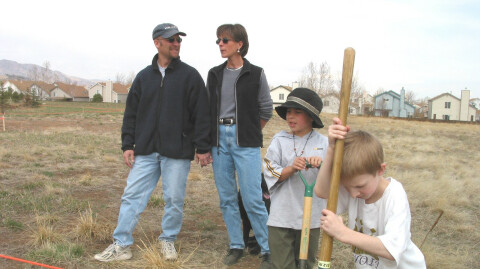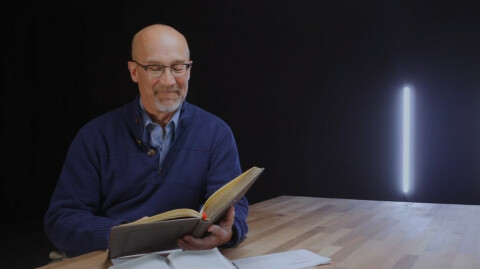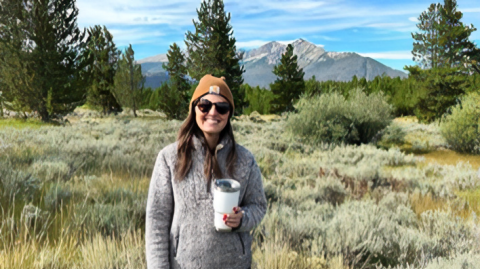
When we began this blog last year, I shared the main reason for writing it with a favorite quote of Theodore Roosevelt: “Every word you write is a smite against the devil.”
I wrote:
I’ve had the urge to smite lately. Some because I have come to a place in my journey where I have some stories to share and convictions to speak; more because the past two pandemic years have created some distance—real and perceived—between you—the Waterstone congregation—and me. I want to move closer, to talk with you more and widely through this effort of writing.
The title of this blog is Practice Resurrection. This is, of course, the last line from Wendell Berry’s poem Manifesto: The Mad Farmer’s Liberation Front. These two words have formed my heart and defined reality for me. Berry’s encouragement is to actually live (and write) as if Christ is risen from the dead. All things forgiven. All things new.
So let’s continue to practice resurrection. Never hesitate to write back.
Here we go with a new series about the “why” and the “how” of worship at Waterstone. First, the “why”—that is, what is the purpose of worship? There are three purposes: 1) to encounter God; 2) to be formed by his Word; 3) to proclaim the gospel. Let’s talk about the first purpose for worship at Waterstone—to encounter God.
The worship gatherings of Waterstone are designed for followers of Jesus to encounter—deliberately and attentively—the presence of God. This encountering of Presence leads us to revere and celebrate the Father and adore his Son—the King—by his Spirit, resulting in allegiance and alignment with the kingdom of God.
The primary word “worship” used in the New Testament comes from two Greek words: pros meaning “toward” and kuneo meaning “to kiss.” The word describes an act of heart-felt, life-bending reverence. Among the ancient Greeks, it was a religious term for the adoration of their gods that meant falling down or bowing to kiss the ground before the deity. The word was also used to describe one’s posture before an emperor when you bow down to bear your neck—symbolizing the placement of your life into his hands.
In the Old Testament, Hebrew scholar, Daniel Block, describes encountering God this way: “True worship involves reverential acts of submission and homage before the divine ruler in response to his gracious revelation of himself and in keeping with his revealed will” (Christianity Today, May 2019). These responses (sometimes called liturgy) to the holy beauty of God include: prayer, song, praise, thanksgiving, silence, meditation, Bible reading, giving, dance, creed, preaching, story, posture and ordinance. Worship is the blending of these expressions of God's worth into meaningful experience that results in the exaltation and pleasure of the King of kings, the satisfaction and shaping of his people (we are made for encounter), and the witness of God’s goodness and love to a watching world (some of whom may be present in the congregation).
So what does it look like to encounter God? Here is a model—David in 2 Samuel 6:12-14:
So David went to bring up the ark of God from the house of Obed-Edom to the City of David with rejoicing. When those who were carrying the ark of the Lord had taken six steps, he sacrificed a bull and a fattened calf. Wearing a linen ephod, David was dancing before the Lord with all his might, while he and all Israel were bringing up the ark of the Lord with shouts and the sound of trumpets.
The text describes a moment of historic proportions. The Ark of the Covenant is coming home to Jerusalem. Throughout Israel’s history, the Ark had given visual assurance of God's presence. Inside the Ark was Moses’ staff (reminder of God’s unstoppable plan to save the world), the stone tablets (reminder of God’s revelation of his character and the subsequent necessary reality), a jar of manna (reminder of God’s provision and providence), and the cherubim cover (reminder of God’s forgiveness of our sins).
Twenty years prior, the Philistines had defeated Israel in battle and “took possession” of the Ark. Now, through David’s trusting, valiant leadership, the Ark of the Covenant is entering Jerusalem, and the moment is full: God has history with these people. God makes history for their mission. God defines history for all people. He is Power and Promise! Everything comes to and comes from this moment.
This moment is full personally for David as well. Scholars perceive this as perhaps the wisest political move that David ever made—bringing the Ark to Jerusalem—to establish his rule. Everything in God’s plan for David has come to this: fighting lions and bears as the boy shepherd, giants as the young prince, both Saul and the Philistines as the anointed but waiting warrior, and now it is time for this dangerous, daring man to rule for the LORD.
David dances because the moment is full of God. His heart is full of God. He has to dance. Worship is a heart so full of God that it has to dance. Worship begins by encountering the Ark (divine revelation): Who God is, what God does and how God does it. Worship results in full-hearted response:
If this God who opens up seas and rivers for his people,
If this God who provides bread in the desert,
If this God who speaks life into existence and gives it boundaries,
If this God who puts his own blood on the mercy seat for our sins,
If this God exists, and if this God has come personally into our lives,
Then the one thing worship cannot be is half-hearted. It has to be extravagant. As Psalm 150:4 says in the imperative tense: “Praise the Lord with tambourine and dancing.”
What was David's worship-full dance? The word means “whirling.” Dancing as a metaphor for worship conveys the sense that our response to God takes us beyond ourselves, sets us free from the plod of merely going through the motions.
You say, “Dancing? I don’t do dancing.” Well, I know you can. I have seen hearts so full that they had to dance—like when the Broncos score a touchdown. And maybe I shouldn’t write this here to a church with Baptist roots, but I used to see a lot of dancing in our home. When I would come home from work and holler “Hello!” and two little boys would yell, “Daddy’s home!” and they’d come running, arms up and all four teeth showing and I’d sweep them into my embrace and we’d do a little whirling.
David is dancing because his Father is coming home. The Ark is the Dwelling Place, and God is coming to Jerusalem, and Daddy is home so David danced like a little boy.
The point of the story is that David's heart filled up with God, and he had to dance. Many of you are afraid I’m saying you should actually dance. What is the dance? What does it mean to encounter God?
There have been times when Jan has said to me, “It’s great how you love to squeeze out this philosophical gas about God and the mysteries of the faith, but if you really loved me you’d clean the bathroom and get me out on a date.” A worship service is like a date with Jesus. It is intentional time when the Bride of Christ is awed and ravished by the Lord of the Dance. It's a moment when we hear Jesus say, “It’s great how you know all the right words of my great dealings for you, but if you really believe it—once in a while I’d expect you to sing, laugh, cry, and, yeah, on occasion do a dance, because I love to be your treasure."
So I can’t script or plan or judge your encountering. I do not know what yours will look like:
At times, it may be kneeling. I did this a time or two with Jan when I really meant it.
At times it may be lifting up hands. This is how I worship at Penn State games.
At times it may look like David’s dance (whirling with your family).
At times it may be tears of laughter or, more often, grief (It is really okay if all you can do in a worship gathering is cry. That is likely the Holy Spirit at work interceding for you).
At times it may be a song (Augustine says that when we sing we “pray twice,” like we really mean it).
At times you may be completely still and overcome in the silence at the foot of the cross.
It’s all dance. The essence of worship is a heart full of God. Irenaeus said, “The glory of God is human being fully alive.” May Waterstone encounter the presence of the Lord and dance like David danced.




3 Comments
This is so beneficial for me to hear, thank you for writing this! Now lm better equipped to draw closer to our Lord in a more meaningful, and reverent manner.
Where can I read Jan's blog?
Larry this is so rich and uplifting. I look forward to reading more. I remember times when you would sing and dance while giving a sermon. But what stands out the most was when I would glance over your direction during worship before service and it was if you were so overcome by the Spirit you could not stand still.
Larry keep dancing, singing and raising your arms to worship our Lord and Saveur.
Thanks